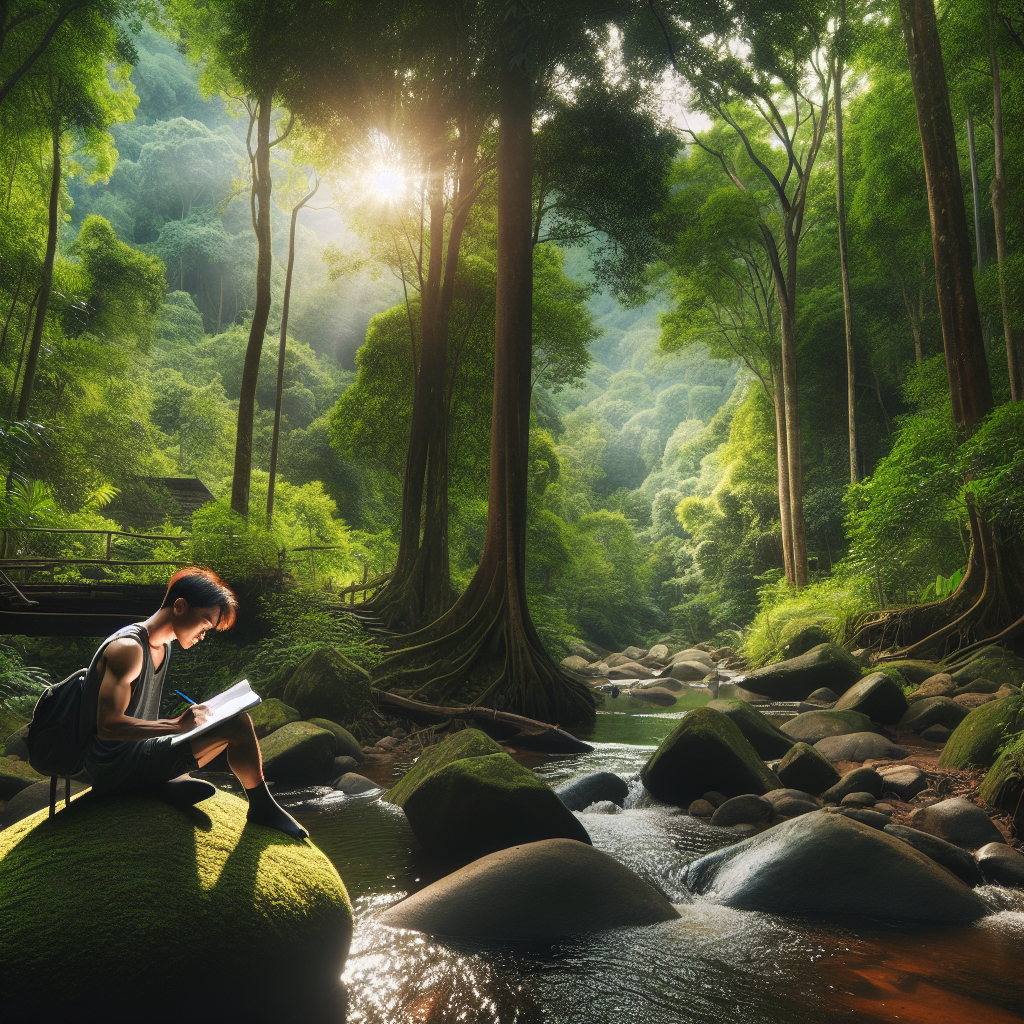In today’s fast-paced world, finding a bastion of calm and inspiration is more valuable than ever. Interestingly, one of the most accessible sources of creative inspiration might just be stepping outside—into nature. Scientific research and anecdotal evidence alike suggest that why being in nature helps creativity is not just a feeling but a measurable effect.
The Science Behind Nature’s Impact on Creativity
Several studies have delved into how natural environments affect our cognitive functions. A pivotal 2012 study by psychologists at the University of Utah and University of Kansas found that backpackers scored 50% better on creativity tests after spending four days in nature disconnected from electronic devices. This suggests that nature itself can trigger an upsurge in creativity.
Moreover, natural settings are replete with sensory stimuli that can spark creativity. The sounds of a babbling brook, the sight of sprawling landscapes, and the scent of earth after rain can all stimulate sensory processing that breaks conventional focus, allowing creative thoughts to surface.
Psychological Restoration in Nature
One of the key theories that explain why being in nature helps creativity is the Attention Restoration Theory (ART). ART posits that natural environments have a restorative effect on the brain. According to this theory, urban environments constantly demand directed attention, which can lead to mental fatigue and a reduction in creativity. Nature, however, promotes an effortless kind of engagement called ‘soft fascination’ that can restore attention and thus, foster creativity.
For instance, a walk through a lush forest or along a sandy beach can help reset one’s mental state, allowing for a fresh perspective when returning to creative work. This aligns with findings from a study published by the National Institutes of Health, indicating that interactions with nature can decrease stress and increase psychological wellbeing, indirectly boosting creative outputs.
Nature’s Role in Enhancing Problem Solving
Another aspect of why being in nature helps creativity relates to how it enhances problem-solving skills. Being in a natural environment can help one break free from traditional mindsets, enabling thinking outside the box. Nature’s inherent unpredictability and vastness can also encourage explorative thought processes, essential for creativity and innovation.
The immersion in a diverse environment like a forest, where one can see life cycles and ecological interactions, may also inspire innovative ideas that are transferable to various challenges, including artistic and scientific problems.
Practical Ways to Harness Nature’s Creative Boost
To make the most of nature’s potential to enhance creativity, consider regular ‘nature breaks’ during your work schedule. Even a short walk in a nearby park can suffice. For those looking to dive deeper, engaging in activities like camping, hiking, or kayaking can provide prolonged exposure to the therapeutic effects of the outdoors.
Incorporating elements of nature into your daily workspace can also be beneficial. Office spaces with plant life, natural light, and even pictures of natural landscapes can help mimic the effects of being directly in nature, fostering a creative environment.
Conclusion
The link between nature and creativity is both intrinsic and profound. As we continue to understand why being in nature helps creativity, it becomes clear that the great outdoors is not only a refuge from the modern world but also a limitless source of inspiration and innovation. For creatives seeking to boost their imaginative prowess, the answer could be as simple as stepping outside and letting nature’s beauty do the rest.


